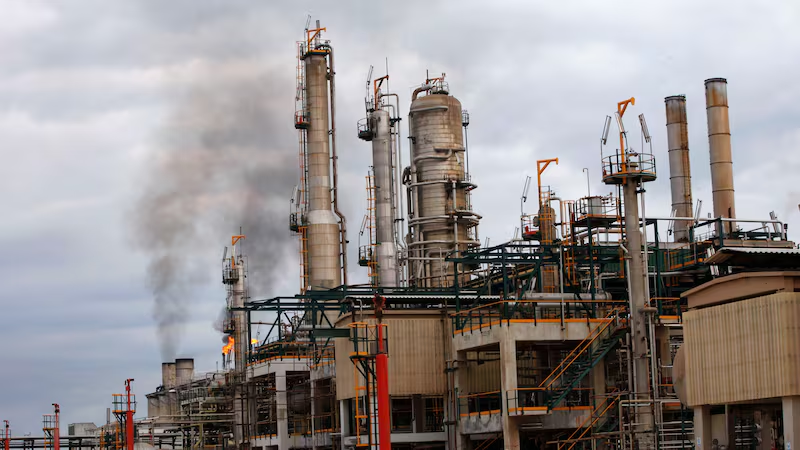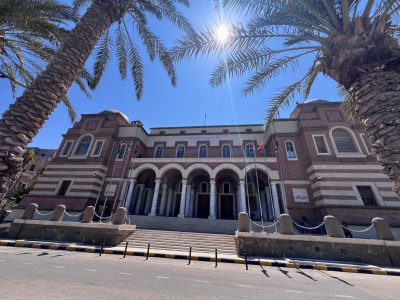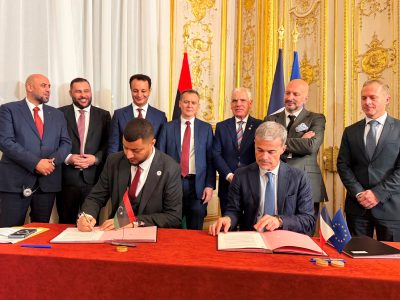Libya Oil Economy: Centralization, Crisis & Opportunity
Libya’s oil fields, stretching across its vast interior to terminals on the Mediterranean coast, have long promised more than they delivered. With Africa’s largest proven reserves – estimated at some 48 billion barrels – and substantial natural gas wealth, the Libya oil economy sits atop extraordinary resources.. Yet more than a decade after the revolution that toppled Muammar Gaddafi, the economy remains defined by vulnerability: overwhelmingly dependent on oil revenues that flow into a politically fraught environment.
By longstanding arrangement, Libya’s National Oil Corporation (NOC) sells the country’s crude and gas on international markets and deposits the proceeds into the Central Bank of Libya (CBL) in Tripoli. From there, the CBL underwrites public-sector salaries, subsidies and regional transfers across the nation. This system is rooted in the principle that oil wealth belongs equally to all Libyans. It has served as an economic glue, maintaining a single currency and monetary system even as Libya is fractured politically. Salaries continued to reach government workers and security forces on both sides of the country’s east-west divide, preventing the outright partition of the economy.
Yet the same model that ties Libya together also exposes its fault lines. In practice, the centralization of oil income has proven brittle under the strain of competing claims to legitimacy. Rival governments in Tripoli and Benghazi have each sought to influence the distribution of revenues. Political factions and armed groups have repeatedly used oil as leverage – shutting off production or blockading terminals to demand more funds or strategic appointments. A blockade in 2020 slashed oil output to a trickle for months; and drove home how a disagreement over revenue sharing could instantly trigger a national economic crisis.
Even in more stable periods, Libya’s finances struggle under the weight of a single artery. Because oil sales account for nearly all state income – over 90 percent by most estimates – the central bank becomes the sole conduit for paying public salaries, financing subsidies and settling foreign obligations. This has bred chronic dysfunction. In 2024, Tripoli failed to pass a formal budget at all, instead spending heavily through executive decrees. Meanwhile, the eastern authorities racked up parallel debts. Ultimately both drew down on the same oil wealth. According to the CBL’s own disclosures, the Tripoli government spend more than 100 billion dinars that year, while Benghazi accumulated some 49 billion dinars. The result was a ballooning money supply and mounting inflation, with the dinar weakening despite the central bank’s effort to defend it. The centralized structure thus became a channel for overspending on multiple fronts.
Transparency remains questionable. The NOC has taken steps to publish monthly reports showing how much it transfers to the central bank. The CBL, too, issues periodic statements on spending. But these top-line figures shed limited light on how revenues are carved up once inside the machinery of government. Libya’s Audit Bureau and foreign partners have urged more disclosures, from line-item budgets to the specifics of large contracts. Public frustration is growing: many Libyans see daily hardship, electricity blackouts and hospitals in disrepair, and naturally wonder where the billions from oil actually go. Tensions over opaque spending boiled over in 2020, when the NOC temporarily withheld revenues from the CBL, citing a lack of confidence in how funds were being handled. Although transfers resumed after international mediation, the episode exposed just how strained trust had become between even Libya’s leading state institutions.
The centralized model has also constrained Libya’s economic agility. Because nearly all revenue flows through Tripoli, local authorities – whether municipal councils or eastern ministries – lack meaningful fiscal autonomy. They remain dependent on transfers from the center, which can be delated or politicized. This has fueled resentment in outlying regions, sometimes pushing them to seek leverage by threatening oil infrastructure itself. Meanwhile, a heavy subsidy system – covering fuel, electricity and basic goods – soaks up enormous portions of the budget. These subsidies are notoriously inefficient, encouraging smuggling of cheap Libyan petrol across borders while consuming resources that could rebuild infrastructure or diversify the economy. Yet with so many Libyan households reliant on subsidized energy and wages from the strained public payroll, reform has stalled. The net effect is the nation is perpetually consuming its own oil wealth to sustain immediate consumption, leaving little for long-term development.
Against this backdrop, some economists and technocrats argue that Libya’s future stability might require not simply shoring up the central system, but thoughtfully opening parts of the oil sector to a more market-based structure. The goal would not be to privatize Libya’s natural resources – ownership would firmly remain with the Libyan state – but to introduce practices that could attract investment, diversify partners, and inject greater transparency and discipline into the flow of oil money.
One avenue is more attractive engagement with reputable international oil traders. The NOC currently markets much of Libya’s crude through official selling prices and longer-term contracts. Allowing a portion of exports to be auctioned on the spot market or through competitive tenders could encourage price discovery and broaden the country’s customer base. Independent traders can also provide pre-financing, helping the country smooth cash flows during periods of budget stress. Indeed, during Libya’s 2011 uprising and subsequent years of instability, commodity firms stepped in to arrange emergency fuel supplies on credit, later recouped through oil offtake deals. Such partnerships, if governed by clear contracts and transparency rules, could be harnessed more systematically to stabilize Libya’s finances. Care would be essential. The process should be structured through open tenders and rigorous audits – competitive trading arrangements could ensure Libya captures fair market value of its exports.
More broadly, inviting greater participation by international oil companies through new licensing rounds and joint ventures could mobilize capital Libya does not have on its own. NOC leadership has acknowledged that pushing production from the currently roughly 1.2 million barrels per day toward the long-held ambition of 2 million will require billions in outside investment. Recent signals are promising: early this year, Libya prepared for its first exploration licensing round since 2007, offering 22 blocks for bidding. Beyond technology and finance, foreign partners bring contractual safeguards that often demand higher standards of disclosure and accountability. Their involvement could exert gentle pressure on Libya’s institutions to modernize governance – improving public confidence that oil proceeds are handled properly.
None of this suggests abandoning Libya’s model of treating oil as a national resource administered for all citizens. Given the country’s political divisions, a fragmented or fully developed revenue system would risk intensifying competition for control at the local level, perhaps even fueling outright partition. The logic behind funnelling all oil proceeds through the CBL remains compelling: it keeps the economy nominally unified and the currency stable. But a middle path is possible – one where the central bank continues to safeguard core revenues, even as Libya diversifies how it markets crude, who it partners with to develop new fields, and how it invites private expertise to rehabilitate critical infrastructure.
The paradox of Libya’s oil wealth is that it both binds the country together and serves as the prize over which rival factions continue to joust. Keeping revenues flowing through its central bank has helped avert crisis, yet it has also entrenched a fragile system where control over oil proceeds is the ultimate lever of power and local grievances often surface as threats to the very infrastructure sustaining the nation. Still, there is a path that need not force a stark choice between state ownership and market openness. By selectively engaging reputable traders, inviting foreign partners under transparent terms, and embedding rigorous oversight, Libya could infuse its oil sector with competition and discipline while keeping its resources firmly under national stewardship.
Photo: Reuters




